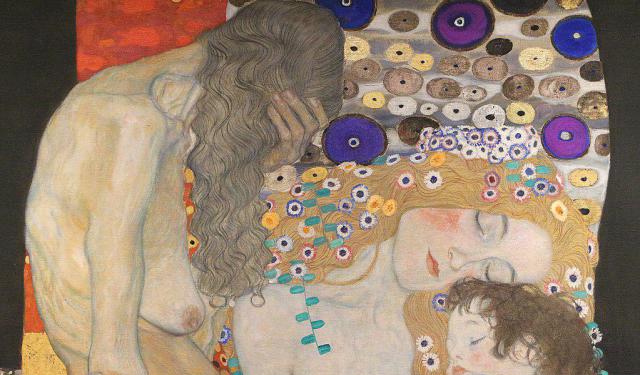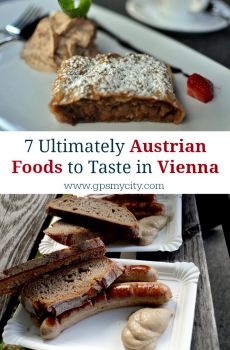
Graben Street, Vienna
The Graben, a vibrant, central thoroughfare in Vienna, originated from the old Roman encampment of Vindobona. For a long time, it was marked by a ditch (“graben” in German) in front of the city walls. In the 12th century, the ditch was filled in and the area transformed into a residential street with the expansion of the city by the Babenberg Dukes, funded by ransom from Richard the Lionheart. This expansion also retained the street's name due to the large, undeveloped areas nearby.
The city's planned extension during the Middle Ages found reflection in the differing building patterns on either side of the Graben. While the north side remained irregular with limited access, the south side developed five regular side streets, changing the landscape over time. The Graben's evolution continued as it became Vienna's main arterial road.
The Baroque Era saw the Graben's further transformation into a fashionable promenade, with significant buildings like the Arkadenhof marking its status. The 18th century brought regulations that emphasized its role as a market and social space, attracting not only the nobility but also entrepreneurs and other city elite. The 19th century made it a hub for luxury shops and eventually a key pedestrian zone by the mid-20th century.
You can start your journey at Stock-im-Eisen-Platz and make your way to the opposite end, Tuchlauben, while passing by some remarkable historic buildings. Among these are the Ankerhaus, once the residence of Otto Wagner, and the Palais Bartolotti-Partenfeld, a beloved summer residence of the renowned Baron family, to name just a few.
During your stroll, be sure to visit the Generalihof, which once served as the headquarters of the "Music Magazine" (Musikalisches Magazin), established in 1784 and responsible for the initial publication of some of Wolfgang Amadeus Mozart's works. As you continue down the street, you'll come across the Grabenhof, an iconic building erected in 1876 on the site of the historical Arkadenhaus, which existed since the late 16th century. Your exploration of the Graben wouldn't be complete without a visit to the ERSTE Foundation building, home to Austria's largest savings bank's headquarters (Erste Österreichische Spar Casse).
Also, don't miss the Plague Column (die Wiener Pestsäule), otherwise known as the Holy Trinity Column (Dreifaltigkeitssäule), erected by Emperor Leopold I following the Great Plague of Vienna in 1679.
The city's planned extension during the Middle Ages found reflection in the differing building patterns on either side of the Graben. While the north side remained irregular with limited access, the south side developed five regular side streets, changing the landscape over time. The Graben's evolution continued as it became Vienna's main arterial road.
The Baroque Era saw the Graben's further transformation into a fashionable promenade, with significant buildings like the Arkadenhof marking its status. The 18th century brought regulations that emphasized its role as a market and social space, attracting not only the nobility but also entrepreneurs and other city elite. The 19th century made it a hub for luxury shops and eventually a key pedestrian zone by the mid-20th century.
You can start your journey at Stock-im-Eisen-Platz and make your way to the opposite end, Tuchlauben, while passing by some remarkable historic buildings. Among these are the Ankerhaus, once the residence of Otto Wagner, and the Palais Bartolotti-Partenfeld, a beloved summer residence of the renowned Baron family, to name just a few.
During your stroll, be sure to visit the Generalihof, which once served as the headquarters of the "Music Magazine" (Musikalisches Magazin), established in 1784 and responsible for the initial publication of some of Wolfgang Amadeus Mozart's works. As you continue down the street, you'll come across the Grabenhof, an iconic building erected in 1876 on the site of the historical Arkadenhaus, which existed since the late 16th century. Your exploration of the Graben wouldn't be complete without a visit to the ERSTE Foundation building, home to Austria's largest savings bank's headquarters (Erste Österreichische Spar Casse).
Also, don't miss the Plague Column (die Wiener Pestsäule), otherwise known as the Holy Trinity Column (Dreifaltigkeitssäule), erected by Emperor Leopold I following the Great Plague of Vienna in 1679.
Want to visit this sight? Check out these Self-Guided Walking Tours in Vienna. Alternatively, you can download the mobile app "GPSmyCity: Walks in 1K+ Cities" from Apple App Store or Google Play Store. The app turns your mobile device to a personal tour guide and it works offline, so no data plan is needed when traveling abroad.
Graben Street on Map
Sight Name: Graben Street
Sight Location: Vienna, Austria (See walking tours in Vienna)
Sight Type: Attraction/Landmark
Guide(s) Containing This Sight:
Sight Location: Vienna, Austria (See walking tours in Vienna)
Sight Type: Attraction/Landmark
Guide(s) Containing This Sight:
Walking Tours in Vienna, Austria
Create Your Own Walk in Vienna
Creating your own self-guided walk in Vienna is easy and fun. Choose the city attractions that you want to see and a walk route map will be created just for you. You can even set your hotel as the start point of the walk.
Famous Homes of Vienna
Throughout centuries, the Austrian capital has been home to numerous famous individuals, from creative people of arts to thinkers, scientists, and politicians. Vienna's illustrious history is closely intertwined with the abodes of its celebrated residents, where artistic virtuosos and luminaries of their time found solace and inspiration.
The often modest apartments of Vienna's famous... view more
Tour Duration: 2 Hour(s)
Travel Distance: 3.9 Km or 2.4 Miles
The often modest apartments of Vienna's famous... view more
Tour Duration: 2 Hour(s)
Travel Distance: 3.9 Km or 2.4 Miles
Vienna Old Town Walking Tour
Encircled by the grand Ringstrasse, otherwise known as the Ring, the historic Old Town of Vienna (Innere Stadt) is a designated World Heritage Site.
At the heart of it all lies Saint Stephen's Square (Stephansplatz), a bustling hub surrounded by iconic landmarks and vibrant street life.
Mozarthaus, once home to the legendary composer Wolfgang Amadeus Mozart, is a delightful stop for... view more
Tour Duration: 2 Hour(s)
Travel Distance: 2.9 Km or 1.8 Miles
At the heart of it all lies Saint Stephen's Square (Stephansplatz), a bustling hub surrounded by iconic landmarks and vibrant street life.
Mozarthaus, once home to the legendary composer Wolfgang Amadeus Mozart, is a delightful stop for... view more
Tour Duration: 2 Hour(s)
Travel Distance: 2.9 Km or 1.8 Miles
Vienna Introduction Walking Tour
A city of green parks, opulent architecture, elegant shopping, crowded theaters, and boulevards for leisurely sauntering — Vienna, the capital of Austria, embodies a blend of regal tradition and contemporary vibrancy. The origin of the city's name is rooted in Roman times, stemming from the Celtic word Vedunia, meaning “forest stream”, which later evolved into Vindobona, a Roman... view more
Tour Duration: 3 Hour(s)
Travel Distance: 4.6 Km or 2.9 Miles
Tour Duration: 3 Hour(s)
Travel Distance: 4.6 Km or 2.9 Miles
Old Town Churches Walking Tour
"Vienna is the city of miracles and music" – Whoever said that must have emphasized Vienna's close association with the Christian faith. The intertwining of Christian heritage and artistry in the Austrian capital finds expression primarily in its magnificent churches.
Sitting at "the crossroads of Christian traditions", Vienna is home to various Christian... view more
Tour Duration: 2 Hour(s)
Travel Distance: 3.9 Km or 2.4 Miles
Sitting at "the crossroads of Christian traditions", Vienna is home to various Christian... view more
Tour Duration: 2 Hour(s)
Travel Distance: 3.9 Km or 2.4 Miles
Klimt Paintings Tour
"I have the gift of neither the spoken nor the written word, especially if I have to say something about myself or my work. Whoever wants to know something about me - as an artist, the only notable thing - ought to look carefully at my pictures" – Gustav Klimt.
Klimt's name is indelibly linked to Vienna. The renowned symbolist painter was a prominent figure in the city. As a... view more
Tour Duration: 2 Hour(s)
Travel Distance: 3.7 Km or 2.3 Miles
Klimt's name is indelibly linked to Vienna. The renowned symbolist painter was a prominent figure in the city. As a... view more
Tour Duration: 2 Hour(s)
Travel Distance: 3.7 Km or 2.3 Miles
Johann Strauss Walking Tour
Throughout the entire 19th century, Vienna was a hub of cultural and musical activity, particularly in the realm of classical music, to which Johann Strauss and his father, Johann Strauss Sr., contributed greatly.
Strauss, the son had a personal connection with Vienna deeply rooted in its cultural fabric. Not only was he born here and spent most of his life, but also he achieved tremendous... view more
Tour Duration: 2 Hour(s)
Travel Distance: 4.1 Km or 2.5 Miles
Strauss, the son had a personal connection with Vienna deeply rooted in its cultural fabric. Not only was he born here and spent most of his life, but also he achieved tremendous... view more
Tour Duration: 2 Hour(s)
Travel Distance: 4.1 Km or 2.5 Miles
Useful Travel Guides for Planning Your Trip
7 Ultimately Austrian Foods to Taste in Vienna
Once the center of the vast Hapsburg Empire, stretched from France in the West to Russia in the East, Austria has embraced many ethnic influences in its cuisine over the course of centuries. Many of the country's distinctive dishes reflect its multinational heritage. Coffee culture, for...
Top 15 Austrian Things to Buy in Vienna
Vienna stool, Viennese schnitzel, Viennese waltz, Vienna sausage, Viennese apple strudel... There's so much Vienna to it, that you might think you've heard it all. Luckily, chances are that you haven't and there's much more in store left to be discovered about this fascinating...








